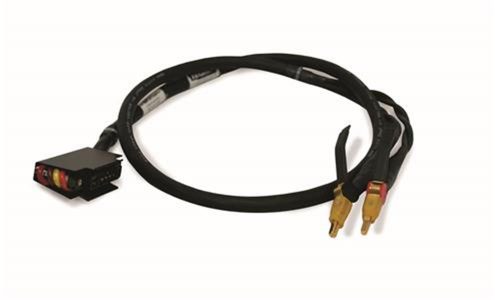
Impedance Spectroscopy
Impedance Spectroscopy can be used to study the behavior of an electrical or chemical current. It can also be used to study the mass transport involved in an electrochemical reaction. The Bode representation can be used to plot the impedance data $vs.f$ frequency.
Inductance Artefacts
Impedance spectroscopy is one of the most sensitive techniques available for studying electrochemical systems. It relies on the collection of high-quality impedance data and its accurate fitting to kinetic parameters. However, there are some artefacts that can interfere with this process, including high-frequency inductance artefacts due to non-ideal behavior of voltage and current amplifiers and stray capacitance. This paper explores how to correct these problems and make the measurement of electrochemical properties more accurate.
The most common type of artefact in impedance spectroscopy is the emergence of an inductive loop. This phenomenon can occur at any frequency range, from very low frequencies to extremely high frequencies. To avoid this problem, wire positions must be tightly controlled and reproducible. This is because the inductance will be changed if the wires are moved.
Time-variance
To interpret impedance spectroscopy data, you must first understand the concept of time-variance. Time-variance is the variation of impedance as a function of frequency. It is also called non-stationarity. In impedance spectroscopy, time-variance is represented as a curve, and can be plotted on a graph.
Time-variance can be a difficult concept to grasp. It is a property of systems whose parameters change over time. For example, a battery’s resistance changes with time as it is discharged. This time-variance makes it difficult to distinguish between a steady-state and a time-invariant curve.
Stationarity
Impedance spectroscopy is a quantitative method for detecting a change in electrical resistance in a material. It can be used to measure the resistance of a material or a semiconductor. In this method, the system is excited by electrical signals, and the response is recorded over a sufficient time period.
The measurement results from the EIS can be interpreted in various ways. A common approach is to construct an Electrical Equivalent Circuit (EEC) containing various electrochemical and electrical elements. Then, the fitting tool finds the parameter values that achieve the best match between the experimental and simulated impedance. These parameters should be representative of the physical quantities of the system being studied.
Methods
Methods of impedance spectrosology have been studied for a variety of applications. They can characterize the properties of living cells and growth dynamics. In particular, these measurements can be used in the diagnosis and therapeutic design of diseases. This dissertation focuses on the development of new measurement techniques using this technique.
To use the technique, a biomolecular target or metallic nanoparticle is attached to an electrode. The electrode is electrically perturbed with a signal generated by a biomolecular target or by the reference analyte. The impedance spectroscopy signal can then be analyzed to identify the concentration of the targeted molecule.



